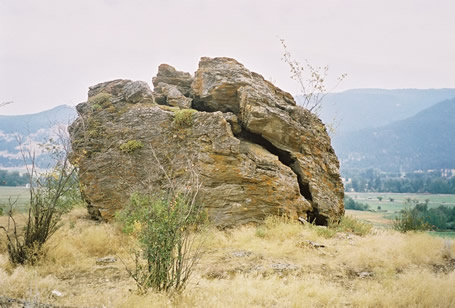EXPLORATION: Weathering and Erosion
2. Mechanical and Chemical Weathering
Mechanical Weathering
Mechanical Weathering is the breaking up of rocks into smaller fragments without any change in the chemical composition of its minerals.
Start this lesson by watching the four minute video on weathering and erosion below. Don't balk at the word "kids" in the title. It is actually a good introduction to the topic of weathering for anyone.
Types of mechanical weathering
exfoliation or spheroidal weathering
- daily variations in temperature cause rocks to expand and contract
- various minerals in a rock expand and contract at different rates; as a result there is a gradual splitting apart of the rock
- in humid climates, running water tends to round off the surface features causing the "skin" of the rock to peel off
- this is also an important form of weathering in desert areas where the daily temperature range can be high
freeze-thaw or frost action (thermal expansion)
- when the water in the cracks and pore spaces of rocks freezes, the force created by its expansion is tremendous
- rocks are literally split apart resulting in shattering
-
An example of the powerful force of freeze thaw action on a large boulder below

A glacial erratic near Vernon, BC (Courtesy: P. Mleziva)
plants and roots
- tree roots, for example, growing down into cracks can exert powerful forces
- even mosses and lichens can help to split rocks apart
Chemical Weathering
Chemical Weathering is the decay of rock through actual chemical change in the composition of its minerals. It is most common in warm and humid climates where both water and heat speed up chemical reactions.
Types of Chemical Weathering
carbonation or solution
- occurs with limestone (easiest to erode)
- ground water absorbs carbon dioxide to form a slightly acidic solution
hydrolysis
- occurs especially with granite
- causes rock to whiten (erodes slowly)
- creates clay
oxidation
- creates rusty red rock
- occurs especially with rock containing iron nitrate
- erodes and forms soil
hydration
- occurs especially with rocks containing salt minerals
- water is absorbed into the internal structure of the rock causing swelling and making it vulnerable to breakdown due to pressure and potential chemical structure changes
- a physio-chemical process eg gypsum results from water being added to anhydrite (CaSO4)

Above, workers clear debris from a road near Samaipata, Bolivia.
The rusty red colour tells you that this rock contains iron which has undergone oxidation.
Also, water has been able to penetrate this sandstone which has caused the erosion resulting in the sandstone falling on to the road.
photo by Nick Smith